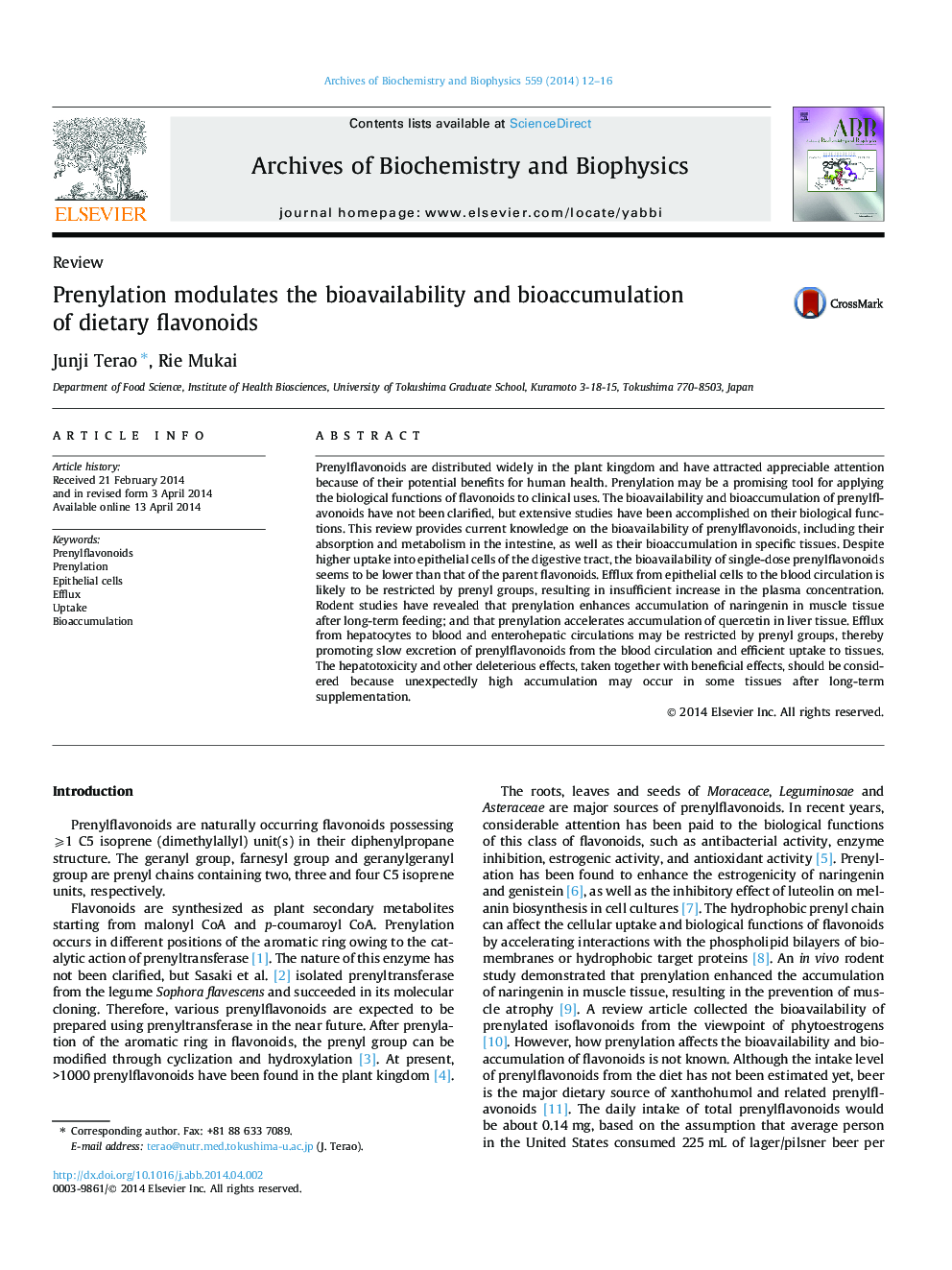| کد مقاله | کد نشریه | سال انتشار | مقاله انگلیسی | نسخه تمام متن |
|---|---|---|---|---|
| 1925124 | 1536343 | 2014 | 5 صفحه PDF | دانلود رایگان |
• Prenylflavonoids are found in plants, eaten in foods/supplements, and are bioactive.
• Prenylation aids flavonoid tissue bioaccumulation by modulating cell uptake/efflux.
• Efflux from epithelial cells to the blood circulation is restricted by prenyl groups.
• High accumulation may occur in tissues after long-term flavonoid supplementation.
Prenylflavonoids are distributed widely in the plant kingdom and have attracted appreciable attention because of their potential benefits for human health. Prenylation may be a promising tool for applying the biological functions of flavonoids to clinical uses. The bioavailability and bioaccumulation of prenylflavonoids have not been clarified, but extensive studies have been accomplished on their biological functions. This review provides current knowledge on the bioavailability of prenylflavonoids, including their absorption and metabolism in the intestine, as well as their bioaccumulation in specific tissues. Despite higher uptake into epithelial cells of the digestive tract, the bioavailability of single-dose prenylflavonoids seems to be lower than that of the parent flavonoids. Efflux from epithelial cells to the blood circulation is likely to be restricted by prenyl groups, resulting in insufficient increase in the plasma concentration. Rodent studies have revealed that prenylation enhances accumulation of naringenin in muscle tissue after long-term feeding; and that prenylation accelerates accumulation of quercetin in liver tissue. Efflux from hepatocytes to blood and enterohepatic circulations may be restricted by prenyl groups, thereby promoting slow excretion of prenylflavonoids from the blood circulation and efficient uptake to tissues. The hepatotoxicity and other deleterious effects, taken together with beneficial effects, should be considered because unexpectedly high accumulation may occur in some tissues after long-term supplementation.
Figure optionsDownload high-quality image (78 K)Download as PowerPoint slide
Journal: Archives of Biochemistry and Biophysics - Volume 559, 1 October 2014, Pages 12–16
